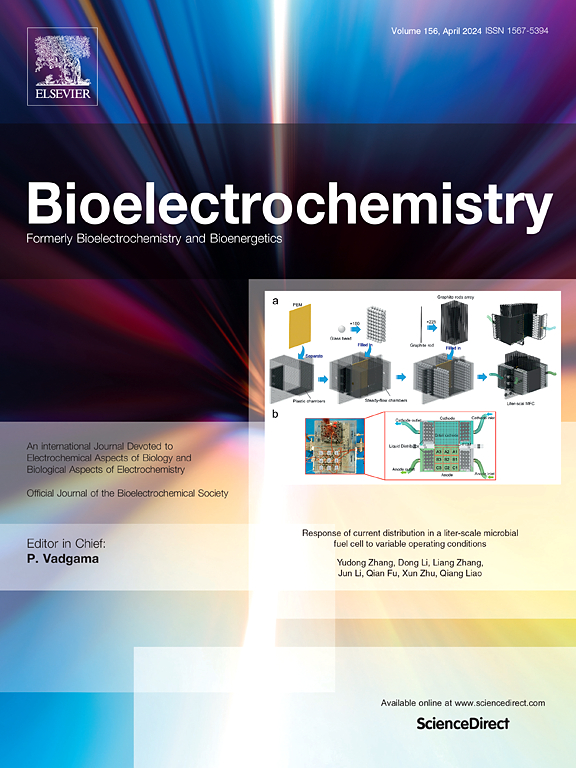Enhancing water toxicity determination sensitivity by using TMAO as electron acceptor of inward extracellular electron transfer in electrochemically active bacteria
IF 4.8
2区 化学
Q1 BIOCHEMISTRY & MOLECULAR BIOLOGY
引用次数: 0
Abstract
Toxicity determination based on electrochemically active bacteria (EAB) shows great prospects for early warning of sudden water pollution. However, the main bottleneck for practical application is the low sensitivity. Extracellular electron transfer (EET) is a key parameter influencing sensitivity. Our previous research has demonstrated that EAB exhibit higher sensitivity when performing inward EET compared with outward EET. Inward EET relies on electron acceptors, but the effects of electron acceptors on sensitivity remain unclear. In this study, the sensitivity of toxicity determination with different electron acceptors was compared. Results indicated that the choice of electron acceptors significantly changed the sensitivity. When Trimethylamine N-oxide (TMAO) was chosen as the electron acceptor, EAB exhibited the highest sensitivity, with a lower response limit of 0.05 mg/L Cd2+. The main reason was that the utilization of TMAO for inward EET increases the membrane permeability of EAB cells, facilitates toxic pollutant penetration, and results in high mortality after toxicity exposure.

求助全文
约1分钟内获得全文
求助全文
来源期刊

Bioelectrochemistry
生物-电化学
CiteScore
9.10
自引率
6.00%
发文量
238
审稿时长
38 days
期刊介绍:
An International Journal Devoted to Electrochemical Aspects of Biology and Biological Aspects of Electrochemistry
Bioelectrochemistry is an international journal devoted to electrochemical principles in biology and biological aspects of electrochemistry. It publishes experimental and theoretical papers dealing with the electrochemical aspects of:
• Electrified interfaces (electric double layers, adsorption, electron transfer, protein electrochemistry, basic principles of biosensors, biosensor interfaces and bio-nanosensor design and construction.
• Electric and magnetic field effects (field-dependent processes, field interactions with molecules, intramolecular field effects, sensory systems for electric and magnetic fields, molecular and cellular mechanisms)
• Bioenergetics and signal transduction (energy conversion, photosynthetic and visual membranes)
• Biomembranes and model membranes (thermodynamics and mechanics, membrane transport, electroporation, fusion and insertion)
• Electrochemical applications in medicine and biotechnology (drug delivery and gene transfer to cells and tissues, iontophoresis, skin electroporation, injury and repair).
• Organization and use of arrays in-vitro and in-vivo, including as part of feedback control.
• Electrochemical interrogation of biofilms as generated by microorganisms and tissue reaction associated with medical implants.
 求助内容:
求助内容: 应助结果提醒方式:
应助结果提醒方式:


